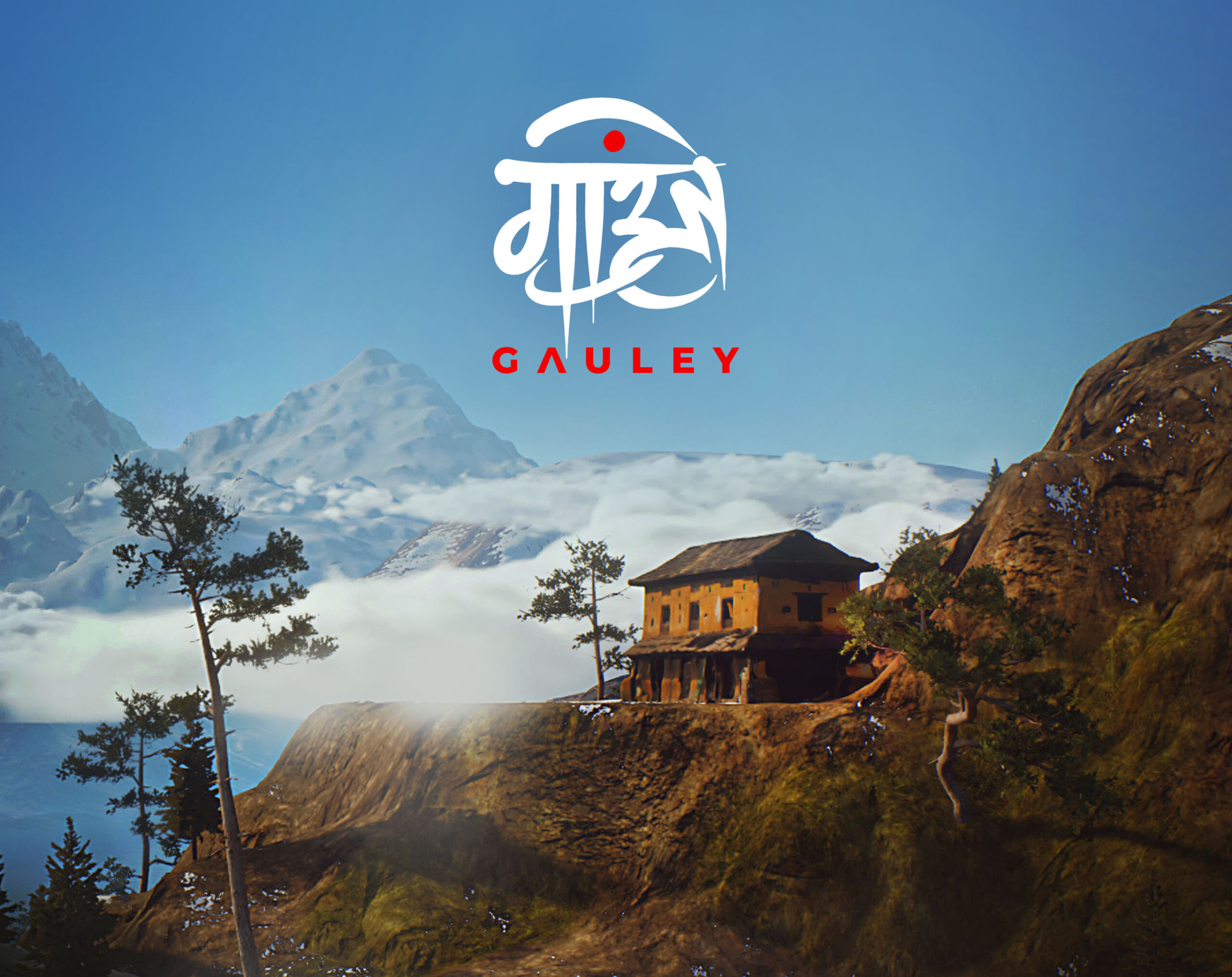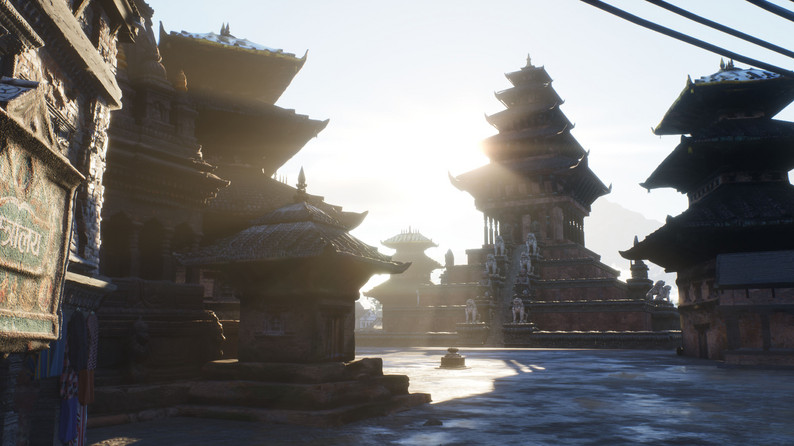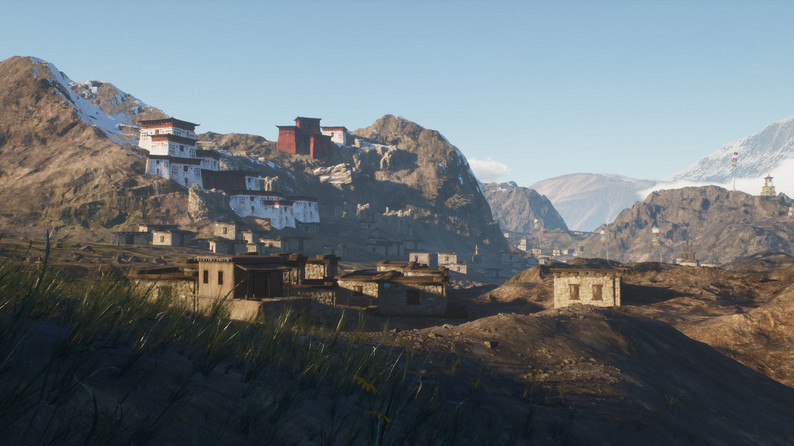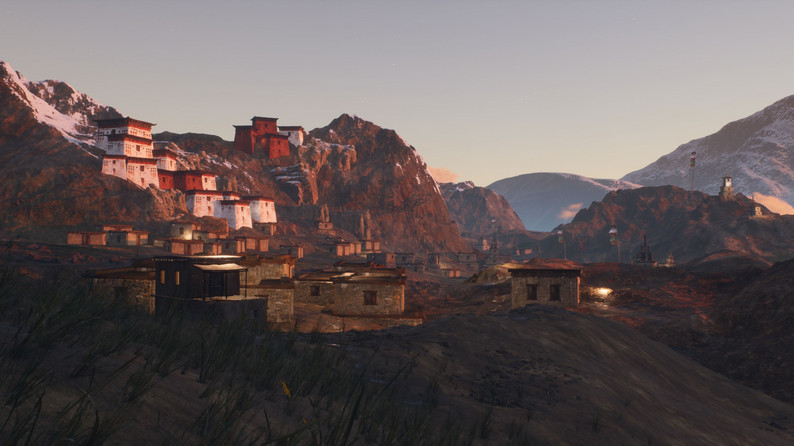Imagine stepping into a digital village where fire-spitting demons lurk behind pixelated trees. Or, a Lakhe hides in the shadows, waiting not to scare you but to remind you of the legends your grandparents whispered long ago.
You can experience it all in Ashim Shakya’s video game Gauley (Villager), a fusion of storytelling and nostalgia, which is a passionate and immersive landscape rooted in Nepali heritage.
With over a decade in digital art and eight years in game development, Ashim wanted to create more than entertainment. “I always dreamed of letting people enter my art to live in, walk around and feel it,” he says. With Gauley, that dream is now a pixelated reality.
The world of Gauley

At first glance, Gauley might seem like a typical indie exploration game. But as you navigate the game’s meditative rhythms planting rice, fixing prayer flags, and crossing terraced fields, you start to feel a sense of place. Of memory. Of home.
It is an open-world game inspired by GTA-style gameplay but set entirely in Nepal. Unlike GTA’s violence-driven model, this game focuses on exploration, narrative depth, and cultural immersion. Players can freely explore villages, hills, chautaris, terraced fields, and temples derived from authentic geography and architecture.
NPCs (non-playable characters) interact with local dialects and show realistic social patterns. Features include traditional music, festivals, clothes, and environmental sounds like birds, bells, and market chatter.
But as you navigate the game’s meditative rhythms planting rice, fixing prayer flags, and crossing terraced fields, you start to feel a sense of place. Of memory. Of home.
Originally intended as a purely exploratory experience, Gauley gradually evolved. Ashim introduced missions and challenges, not to overwhelm but to enhance the journey. “I wanted both Nepalis and foreigners to relive Nepal not through photos or documentaries, but interactively,” he explains.
Many Nepalis living abroad have embraced the game as a digital return to roots. Besides, his audience on YouTube share feedback, ideas, and support. In earlier projects like Allare, Ashim even invited fans to submit voice clips, helping bring characters to life in authentic Nepali voices.
Worlds beyond Gauley
Ashim has produced several other titles prior, including his most recent work, Jange. Set in a complex universe and influenced by Nepali history, it features alien invasions, boss fights, and otherworldly elements. Jung Bahadur transforms into a knight battling bizarre, fire-spitting beings in an 8-bit Kathmandu.

But even Jange serves as a sideline to a more ambitious project called Allare (directionless bum). This game follows a young man who faces numerous challenges in his village and eventually relocates to old Kathmandu. There, he becomes entangled in crime and struggles to find his path in life.
Set in the 1960s, Allare features period-specific visuals such as vintage blue jeeps, rattly buses, bicycles, and dirt bikes. The characters, dressed in traditional attire, communicate in Nepali.
Shakya has also developed two other exploratory 3D games: Didi and Urban Legends: Survival. These games showcase models of Nepali buildings and cultural objects. Urban Legends has garnered over 100,000 downloads and an impressive 4.0-star rating.
Developing games and legacy
A curious introvert child who took gadgets apart and explored physics, Ashim found his true voice in art, earning early recognition for surreal digital paintings like Solitude and Mellow Dwellings, which he painstakingly crafted pixel by pixel.
Although he briefly attended fine art college and Kathmandu University, he left to pursue independent learning. He mastered animation software like Maya and 3D Studio Max before transitioning into digital art and eventually game development.

His journey into game design began with Flight: The Valley, an unguided, meditative flying experience. Encouraged by its global reception, he then tailored his work to Nepali audiences by creating culturally rooted titles such as Didi, Urban Legends: Survival, which surpassed 100,000 downloads, and exploratory projects like Khukuri and Gauley.
For him, game development is not just a career path; it’s a way to inspire and offer alternatives to youth who might otherwise feel forced to leave the country for work.
Ashim managed to accomplish it all without a large team or expensive equipment. “Electricity, internet, and a simple laptop can be enough,” he says. For him, game development is not just a career path; it’s a way to inspire and offer alternatives to youth who might otherwise feel forced to leave the country for work.
He believes gaming can be a creative solution to unemployment. “Don’t chase results. Chase your vision. The results will follow.”
As Gauley continues to evolve, Ashim has more games in the pipeline. And he is certain that the foundation of his works will always be Nepali culture. Whether through fireballs or silent prayer flags, Ashim is building a legacy, one pixel at a time.
Pratikshya Bhatta is a junior editor with Nepal Connect.





